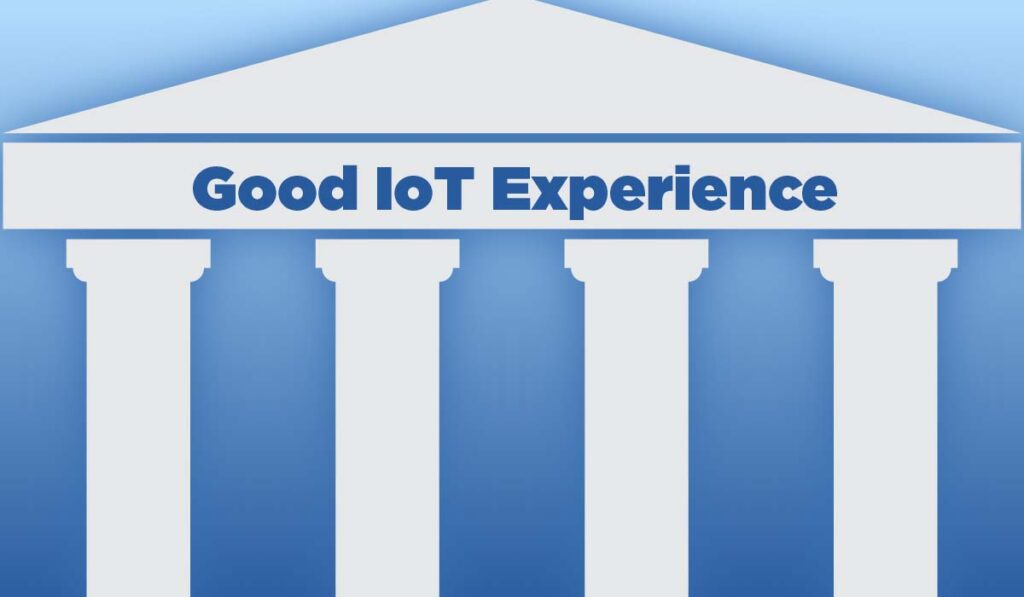The Internet of Things (IoT) comprises systems of interconnected devices. This includes computers, mechanical and digital machines, to name but a few. These devices can transfer large volumes of data over a network through unique identifiers (UIDs) without requiring any human interaction.
Home systems, such as lighting, electronic appliances, streaming services, and smart speakers, also fall under the umbrella of IoT. Additionally, numerous large cities leverage IoT for their monitoring needs, this includes volumes of traffic and weather conditions.

The successful operation of IoT relies on four central pillars:
1. The Device
An IoT device is a form of hardware that is capable of transmitting data from one location to another via the internet. Typically, this data is recorded by a sensor that is integrated within the device. To support numerous devices operating on a single network, a wireless solution is often essential. The most common IoT devices include mobiles, medical devices, cars and electronic appliances.
2. The Data
The primary function of IoT is to gather vast amounts of data in order to enhance application functionality and user experience. For example, music streaming services gather data on the music and artists that each individual listens to; and exercise applications regularly utilize location trackers to track users’ movements and their physical activities throughout the day.
Many organizations integrate IoT with their HVAC (heating, ventilation and air conditioning) and security systems, enabling centralized or even fully remote control. There are many forms of IoT data that can be collected, with status data being the simplest and most widespread. IoT data is routinely used in highly complex analyses of large data sets.
3. Analytics
Ensuring accurate analysis and efficient processing of the gathered data is crucial. This pillar is the key factor that empowers IoT applications, making them valuable in the daily lives of both individuals and organizations. When this data is successfully processed, analyzed and understood, it transforms into truly valuable information. Comprehensive analytics plays a pivotal role in optimizing and significantly enhancing the benefits for the user.
4. Connectivity
Connectivity is the central pillar that enables the seamless collaboration of the three aforementioned pillars. Maintaining a consistent connection is imperative for the accurate transfer and analysis of the data. High-bandwidth connectivity, with minimal to no issues, is essential to sustain this real-time data flow. Without a continuous stream of data from the device, live data analysis becomes impossible, potentially hindering the optimization of the system themselves. Poor connections also pose the risk of data inaccuracy, due to the loss of other relevant data.
Conclusion
The correct operation of each of these four pillars is a prerequisite for the overall success of IoT. All these pillars are not only vital for ensuring a reliable and cohesive user experience but also for guaranteeing functionality. Without even one of these pillars, IoT would be incapable of performing its designated tasks, due to its reliance on the seamless communication of necessary data.Strong and consistent user experiences through IoT play a crucial role in fostering strong connections between users and brands. This, in turn, elevates team confidence in the technology they use, enhances operational efficiencies, improves customer satisfaction, and fosters increased brand loyalty.